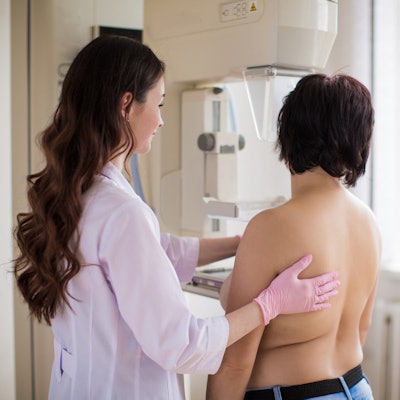
Implementing quality improvement interventions as part of a national collaborative led to rebound volumes in cancer screening, according to findings published November 16 in JAMA Network Open.
A team led by Dr. Rachel Hae-Soo Joung of Northwestern University in Chicago reported that nearly 80% of programs for breast, lung, colorectal, and cervical cancer screening accomplished the goal of restoring screening to pre-COVID-19 volumes, as well as achieving a minimum of 10% growth.
"This experience validated the value of participating in a national cancer accreditation program," co-author Dr. Heidi Nelson from the American College of Surgeons Cancer Programs in Chicago told AuntMinnie.com. "We expect this same mobilization of forces may be important for responding to other disruptive situations."
While cancer screening began to rebound from the early days of the COVID-19 pandemic, previous reports suggest that screening deficits persisted into 2021. Researchers have expressed concern that these missed or skipped screenings could lead to increased cancer-related deaths in the future.
Joung and colleagues sought to determine if implementing quality improvement interventions would help address these deficits. The study explored the success of programs in the Return-to-Screening national quality improvement collaborative developed by the American College of Surgeons (ACoS) Cancer Programs and the American Cancer Society (ACS).
A total of 859 projects led by 786 accredited screening programs were included in the study. The team examined screening volumes in the prepandemic period (September 2019 to January 2020) the pandemic period (September 2020 to January 2021), and the intervention period (June to November 2021).
Interventions focused on increasing patient demand, delivery of screening services, and community access through actions such as quality improvement education, data management, and peer-to-peer shared learning.
The authors found that 79% of the projects reached their monthly target volumes and that no hospital characteristics were tied to the increased likelihood of reaching monthly target volumes except for disease site (for example, patients were more likely to undergo lung cancer screening compared with breast cancer screening, with an odds ratio of 2.8).
For individual screening types, 75% of breast cancer projects improved target volumes. As for other cancer screening initiatives, 87% of lung cancer, 80% of colorectal cancer, and 59% of cervical cancer projects achieved similar success.
The study results reinforce the importance of quality improvement in healthcare programs, as well as provide education on such methods for how quality improvement projects can be conducted, the authors concluded.
Nelson told AuntMinnie.com that the team is conducting a national effort to address smoking cessation for patients who present with newly diagnosed cancers.
"Next year we will spend time learning more about and addressing barriers to cancer care," she added.




















